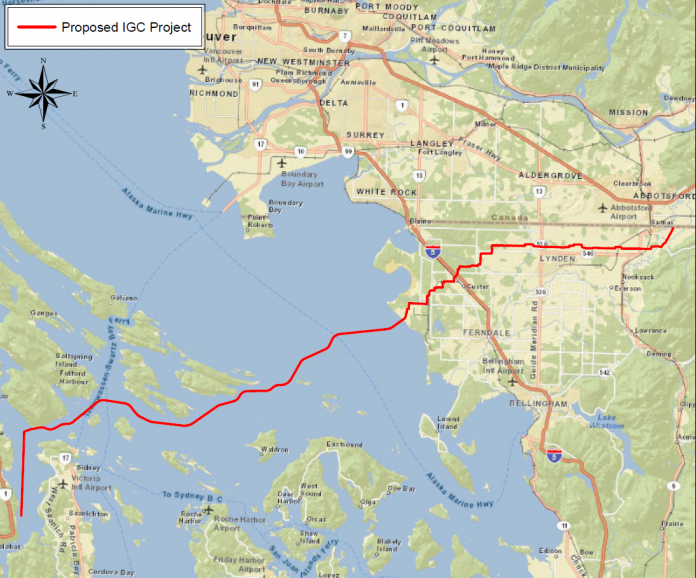Press Release:
Steelhead LNG announced earlier today a pre-construction agreement with pipeline developer Williams to commence with the design and regulatory approvals for the Island Gas Connector Project (Project), a proposed natural gas pipeline which will transport natural gas to Vancouver Island where Steelhead LNG is exploring the development of two liquefied natural gas (LNG) facilities.
With the Malahat Nation, Steelhead LNG is pursuing the development of the proposed Malahat LNG Project, a floating natural gas liquefaction and export facility located on the shoreline of Malahat Nation-owned land approximately 5 miles (8 kilometers) south of Mill Bay, BC, on the east coast of Vancouver Island. On the west coast of Vancouver Island, Steelhead LNG is exploring the development of a proposed LNG facility with the Huu-ay-aht First Nations at Sarita Bay, BC, 46.5 miles (75 kilometers) southwest of Port Alberni.
The Project would be an independent pipeline that would transport natural gas 33 miles (52.8 kilometers) from Williams’ Northwest Pipeline’s interconnect with Spectra Energy’s BC Pipeline system at Sumas, Washington to Cherry Point, Washington. From there, it would travel 47 miles (75.2 kilometers) subsea, landing directly at the proposed Malahat LNG Project. While, the first phase of the Project would be constructed to supply the Malahat LNG facility, the Project would be designed to meet the potential capacity requirements of both proposed LNG facilities, thus offering potential shared infrastructure benefits. Delivering supply to the proposed LNG Project at Sarita Bay would require an additional independent pipeline from the east coast of Vancouver Island to Sarita Bay, designed, owned and operated by a separate Canadian entity and subject to its own regulatory approval process.
“Our partnership with one of the world’s leading builders and operators of natural gas pipelines is a significant step forward for both of our proposed projects,” said Nigel Kuzemko, CEO, Steelhead LNG. “Williams shares our commitment to environmental and social responsibility and we look forward to working with them to develop a natural gas pipeline whose design, route, construction and operation meets the needs and standards of potentially affected Aboriginal groups, communities, governments, regulators, our Projects, and partners. Steelhead looks forward to working with potentially affected Aboriginal groups in Canada to explore opportunities for them to share in the economic benefits of the Canadian portion of the Project.”
Williams will design, construct and operate the Project. As an international pipeline, the Project will be subject to the approval of the Federal Energy Regulatory Commission in the United States and the National Energy Board in Canada.
The proposed Project will undergo rigorous regulatory, environmental and technical assessments. As part of the proposed Project, Steelhead LNG and Williams will also undertake an extensive consultation and engagement process with potentially affected Canadian Aboriginal groups, United States Tribes, landowners, local stakeholders and communities.



